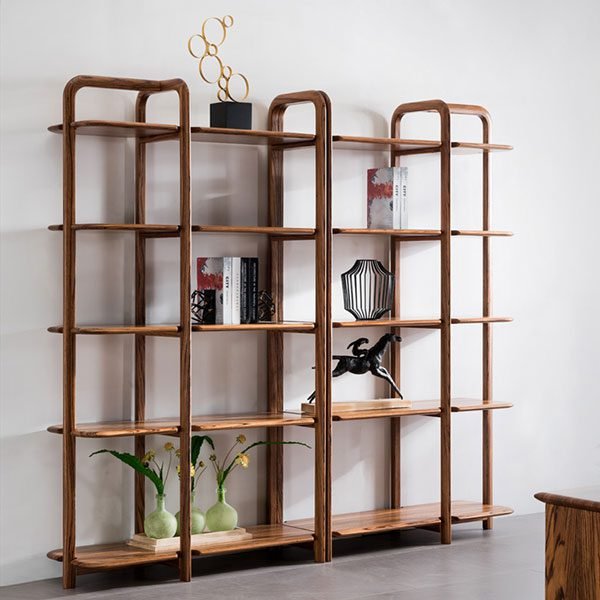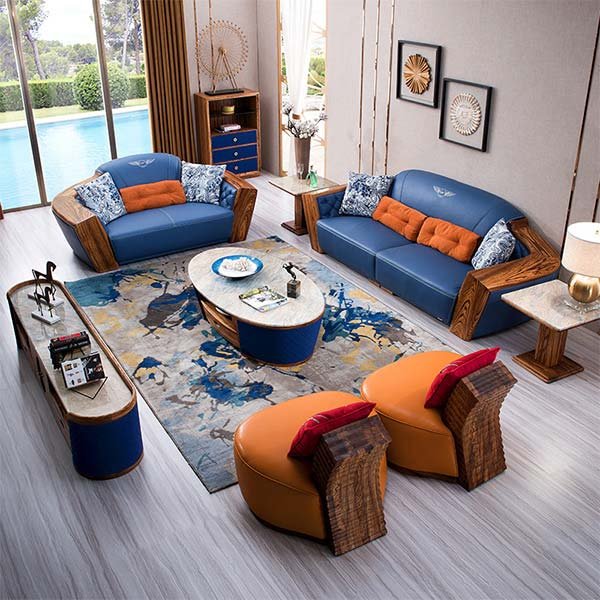“Transform your space with The Art of Modern Furniture: Embrace the latest trends and find endless inspirations.”
Minimalism in modern furniture design
Minimalism in modern furniture design
Minimalism has become a popular trend in modern furniture design. With its clean lines, simplicity, and focus on functionality, minimalist furniture offers a sleek and contemporary look that is both timeless and versatile. In this article, we will explore the key features of minimalism in modern furniture design and discuss some inspirations for incorporating this style into your own home.
One of the defining characteristics of minimalist furniture is its simplicity. Minimalist pieces often have clean lines and a streamlined appearance, with no unnecessary ornamentation or embellishments. This simplicity not only creates a sense of calm and tranquility in a space but also allows the furniture to blend seamlessly with different interior styles.
Another important aspect of minimalist furniture design is its focus on functionality. Minimalist pieces are designed to be practical and efficient, with every element serving a purpose. This emphasis on functionality means that minimalist furniture often features hidden storage solutions, multi-purpose designs, and modular components that can be easily rearranged to suit different needs.
In terms of materials, minimalist furniture tends to favor natural and sustainable options. Wood, metal, and glass are commonly used in minimalist designs, as they offer a clean and timeless aesthetic. These materials also have a durability that ensures the furniture will stand the test of time.
When it comes to color palettes, minimalism often embraces neutral tones such as white, black, gray, and beige. These colors create a sense of calm and simplicity, allowing the furniture to blend seamlessly with different interior styles. However, pops of color can also be incorporated into minimalist spaces through accessories or accent pieces, adding visual interest and personality to the room.
In terms of inspirations, Scandinavian design has been a major influence on minimalist furniture. Scandinavian design is known for its simplicity, functionality, and use of natural materials. This style often features light-colored wood, clean lines, and a focus on comfort and practicality. Incorporating Scandinavian-inspired minimalist furniture into your home can create a warm and inviting atmosphere.
Another source of inspiration for minimalist furniture design is Japanese aesthetics. Japanese design is characterized by its simplicity, harmony, and focus on natural materials. Minimalist furniture inspired by Japanese design often features low profiles, clean lines, and a sense of tranquility. Incorporating Japanese-inspired minimalist furniture into your home can create a serene and peaceful environment.
In conclusion, minimalism in modern furniture design offers a sleek and contemporary look that is both timeless and versatile. With its clean lines, simplicity, and focus on functionality, minimalist furniture can create a sense of calm and tranquility in a space. By incorporating natural materials, neutral color palettes, and drawing inspiration from Scandinavian and Japanese design, you can create a minimalist interior that is both stylish and practical. So, why not embrace the art of modern furniture and bring minimalism into your own home?
Incorporating sustainable materials in furniture
Incorporating sustainable materials in furniture has become a growing trend in the world of modern design. As people become more aware of the impact their choices have on the environment, they are seeking out furniture options that are not only stylish but also eco-friendly. This shift in consumer preferences has led to an increase in the use of sustainable materials in the production of furniture.
One of the most popular sustainable materials used in furniture design is reclaimed wood. Reclaimed wood is sourced from old buildings, barns, and other structures that are no longer in use. By repurposing this wood, designers are able to give it a new life and prevent it from ending up in a landfill. Reclaimed wood adds a unique and rustic charm to furniture pieces, making them stand out in any space.
Another sustainable material that is gaining popularity is bamboo. Bamboo is a fast-growing grass that can be harvested and regrown within a few years. It is a highly renewable resource and its use in furniture production helps to reduce deforestation. Bamboo furniture is not only environmentally friendly but also durable and lightweight, making it a practical choice for modern homes.
Recycled materials are also being used in the creation of sustainable furniture. Plastic bottles, for example, can be transformed into a durable and weather-resistant material known as recycled plastic lumber. This material can be used to create outdoor furniture that is both stylish and sustainable. By using recycled materials, designers are able to reduce waste and minimize the demand for new resources.
In addition to using sustainable materials, furniture designers are also incorporating eco-friendly manufacturing processes. This includes using non-toxic adhesives and finishes that do not release harmful chemicals into the environment. By choosing furniture that is made with these processes, consumers can ensure that their purchase is not contributing to pollution or harm to the planet.
The incorporation of sustainable materials in furniture is not only beneficial for the environment but also for the health and well-being of individuals. Many traditional furniture materials, such as particleboard and synthetic fabrics, contain harmful chemicals that can off-gas and contribute to indoor air pollution. By opting for furniture made with sustainable materials, consumers can create a healthier living environment for themselves and their families.
As the demand for sustainable furniture continues to grow, designers are finding new and innovative ways to incorporate eco-friendly materials into their creations. From using recycled metals to experimenting with natural fibers, the possibilities are endless. The art of modern furniture is evolving, and sustainability is at the forefront of this evolution.
In conclusion, incorporating sustainable materials in furniture is a trend that is here to stay. With a focus on using reclaimed wood, bamboo, and recycled materials, designers are creating furniture that is not only stylish but also environmentally friendly. By choosing furniture made with sustainable materials, consumers can make a positive impact on the planet while enjoying beautiful and functional pieces in their homes. The art of modern furniture is embracing sustainability, and the results are truly inspiring.
Mixing different styles and eras in furniture design
Mixing different styles and eras in furniture design has become a popular trend in the world of interior design. This approach allows for a unique and eclectic look that adds character and personality to any space. By combining elements from different periods and styles, designers can create a harmonious and visually interesting environment. In this article, we will explore the art of mixing different styles and eras in furniture design, and provide some inspirations for incorporating this trend into your own home.
One of the key principles of mixing different styles and eras in furniture design is to find a common thread that ties everything together. This could be a color palette, a material, or a specific design element. For example, you could mix a mid-century modern sofa with a vintage-inspired coffee table, and tie them together with a bold, geometric rug. This creates a cohesive look that is both visually appealing and functional.
Another important aspect to consider when mixing different styles and eras in furniture design is balance. It’s important to strike a balance between the different elements to create a harmonious and visually pleasing space. This can be achieved by using a mix of large and small pieces, as well as varying heights and textures. For example, you could pair a sleek, contemporary dining table with a set of vintage chairs, and add a statement chandelier to create a balanced and visually interesting dining area.
Incorporating different styles and eras in furniture design also allows for personal expression and creativity. It gives you the freedom to mix and match pieces that reflect your own unique style and taste. For example, you could combine a traditional, ornate mirror with a modern, minimalist console table to create a striking focal point in your entryway. This not only adds visual interest, but also tells a story about your personal style and interests.
When it comes to mixing different styles and eras in furniture design, there are no hard and fast rules. It’s all about experimentation and finding what works best for you and your space. However, there are some general guidelines that can help you achieve a cohesive and visually pleasing look. For example, it’s important to consider the scale and proportion of the different pieces. Mixing large and small pieces can create visual interest and balance, while using pieces of similar scale can create a more cohesive look.
In conclusion, mixing different styles and eras in furniture design is a trend that allows for creativity and personal expression. By finding a common thread, striking a balance, and experimenting with different pieces, you can create a unique and visually interesting space. Whether you prefer a more eclectic look or a more subtle mix of styles, incorporating different elements from different periods and styles can add character and personality to your home. So go ahead, embrace the art of mixing different styles and eras in furniture design, and create a space that is truly your own.
Заключение
Заключение о The Art of Modern Furniture: Trends and Inspirations:
The Art of Modern Furniture: Trends and Inspirations представляет собой информативное и вдохновляющее исследование современной мебели. Книга предлагает читателям обзор последних тенденций в дизайне мебели, а также источники вдохновения для создания уникальных и современных интерьеров. Она представляет широкий спектр стилей и материалов, используемых в современной мебельной индустрии, и демонстрирует, как они могут быть применены для создания функциональных и эстетически привлекательных предметов мебели. Книга является ценным ресурсом для дизайнеров, архитекторов и всех, кто интересуется современным дизайном интерьера и мебелью.



